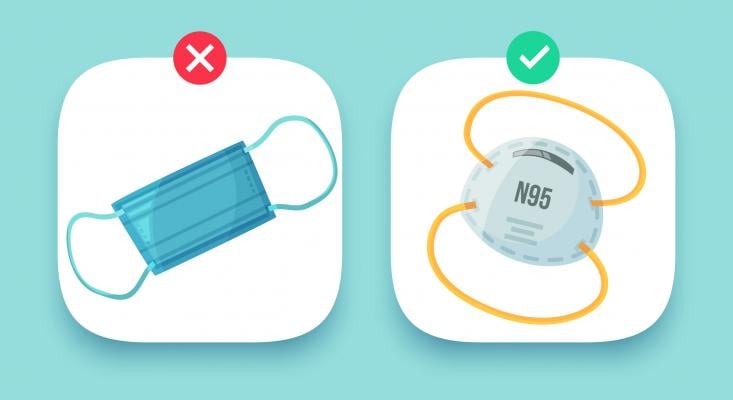
Image courtesy of Getty Images
March 11, 2020 — As COVID-19 spreads in the U.S., there is growing interest in the role and appropriateness of chest radiographs (CXR) and computed tomography (CT) for the screening, diagnosis and management of patients with suspected or known COVID-19 infection. Contributing to this interest are limited availability of viral testing kits to date, concern for test sensitivity from earlier reports in China, and the growing number of publications describing the CXR and CT appearance in the setting of known or suspected COVID-infection.
To date, most of the radiologic data comes from China. Some studies suggest that chest CT in particular may be positive in the setting of a negative test. We want to emphasize that knowledge of this new condition is rapidly evolving, and not all of the published and publically available information is complete or up-to-date.
Key goals for the U.S. health care system in response to the COVID-19 outbreak are to reduce morbidity and mortality, minimize disease transmission, protect health care personnel, and preserve health care system functioning.
The ACR believes that the following factors should be considered regarding the use of imaging for suspected or known COVID-19 infection:
- The Centers for Disease Control (CDC) does not currently recommend CXR or CT to diagnose COVID-19. Viral testing remains the only specific method of diagnosis. Confirmation with the viral test is required, even if radiologic findings are suggestive of COVID-19 on CXR or CT.
- For the initial diagnostic testing for suspected COVID-19 infection, the CDC recommends collecting and testing specimens from the upper respiratory tract (nasopharyngeal AND oropharyngeal swabs) or from the lower respiratory tract when available for viral testing.
- Generally, the findings on chest imaging in COVID-19 are not specific, and overlap with other infections, including influenza, H1N1, SARS and MERS. Being in the midst of the current flu season with a much higher prevalence of influenza in the U.S. than COVID-19, further limits the specificity of CT.
- The current ACR Appropriateness Criteria statement on Acute Respiratory Illness, last updated in 2018 states that chest CT is “Usually Not Appropriate.”
- A review from the Cochrane Database of Systematic Reviews on chest radiographs for acute lower respiratory tract infections concluded that CXR did not improve clinical outcomes (duration of illness) for patients with lower respiratory tract infection; the review included two randomized trials comparing use of CXRs to no CXRs in acute lower respiratory tract infections for children and adults.
Additionally, there are issues related to infection control in health care facilities, including the use of imaging equipment:
- Primary care and other medical providers are attempting to limit visits of patients with suspected influenza or COVID-19 to health care facilities, to minimize the risk of spreading infection. The CDC has also asked that patients and visitors to health care facilities be screened for symptoms of acute respiratory illness, be asked to wear a surgical mask and be evaluated in a private room with the door closed.
- In addition to environmental cleaning and decontamination of rooms occupied by a patient with suspected or known COVID-19 infection by thorough cleaning of surfaces by someone wearing proper protective equipment, air-flow within fixed radiography or CT scanner rooms should be considered before imaging the next patient. Ventilation is an important consideration for the control of airborne transmission in health care facilities . Depending on the air exchange rates, rooms may need to be unavailable for approximately 1 hour after imaging infected patients; air circulation rooms can be tested.
- These measures to eliminate contamination for subsequent patients may reduce access to imaging suites, leading potentially to substantial problems for patient care.
Based on these concerns, the ACR recommends:
- CT should not be used to screen for or as a first-line test to diagnose COVID-19
- CT should be used sparingly and reserved for hospitalized, symptomatic patients with specific clinical indications for CT. Appropriate infection control procedures should be followed before scanning subsequent patients.
- Facilities may consider deploying portable radiography units in ambulatory care facilities for use when CXRs are considered medically necessary. The surfaces of these machines can be easily cleaned, avoiding the need to bring patients into radiography rooms.
- Radiologists should familiarize themselves with the CT appearance of COVID-19 infection in order to be able to identify findings consistent with infection in patients imaged for other reasons.
For more information: www.acr.org
Recommended Resources:
Centers for Disease Control:
General information and situation updates
Information for health care professionals
World Health Organization (WHO) COVID-19 situation reports
World Health Organization (WHO) coronavirus information page
U.S. Food and Drug Administration (FDA) COVID-19 information page
Centers for Disease Control (CDC) COVID-19 information page
Related Coronavirus Content:
The Cardiac Implications of Novel Coronavirus
CT Provides Best Diagnosis for Novel Coronavirus (COVID-19)
Radiology Lessons for Coronavirus From the SARS and MERS Epidemics
Deployment of Health IT in China’s Fight Against the COVID-19 Epidemic
Emerging Technologies Proving Value in Chinese Coronavirus Fight
Radiologists Describe Coronavirus CT Imaging Features
Coronavirus Update from the FDA
CT Imaging of the 2019 Novel Coronavirus (2019-nCoV) Pneumonia
CT Imaging Features of 2019 Novel Coronavirus (2019-nCoV)
Chest CT Findings of Patients Infected With Novel Coronavirus 2019-nCoV Pneumonia


 December 10, 2025
December 10, 2025 









